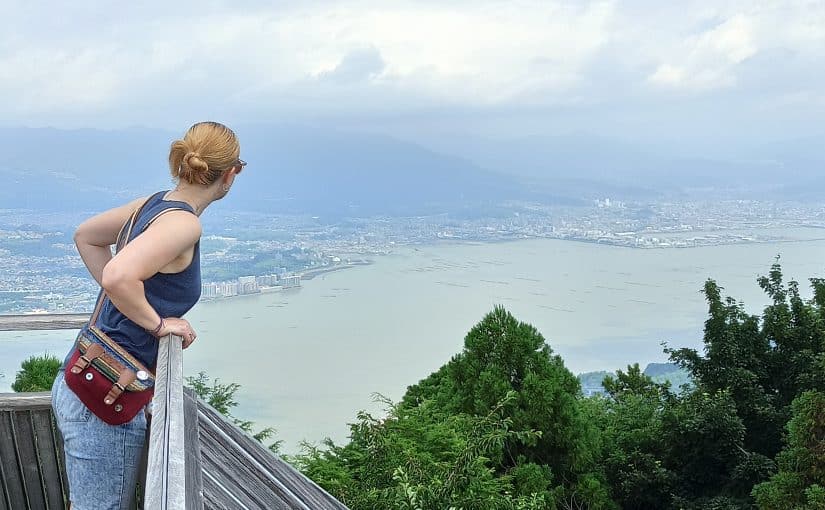The morning started with a 5 so I was not happy. But when Major General Aimi San says “GTFO of bed”, that’s what you do. Soon I was dozing off on the train and a right grumpy bastard. Then I had a mediocre vending machine latte and I was ready to end the Japan leg of our trip on a high. Literally.
Leaving the tram, train and ferry behind us, we walked along the coast of Itsukushima Island. The whole island is considered Holy and more commonly known as Miyajima (shrine island). This was since a monk named Kobo Daishi came here to establish Esoteric Buddhism in 806. He climbed Mt. Misen and founded the Daishoin Temple. He practised this new form of Buddhism for 100 days and nights and the fire he used has been burning ever since; for 1200 years. Except when we arrived, it was smoking, not burning. Perhaps that’s what the oil lamp on the altar is for, a safety flame in case the wood fire goes out? Nevertheless it is said that drinking the water boiled on this fire will give you +10 years of life, so we chugged a bit down. If you go to Hakone and eat a black egg cooked in the hot sulphur spring water you get +7 years. So there is a good +17 years of life you can claim, just by visiting Japan and a few cool sights. Gotta be worth the trip!

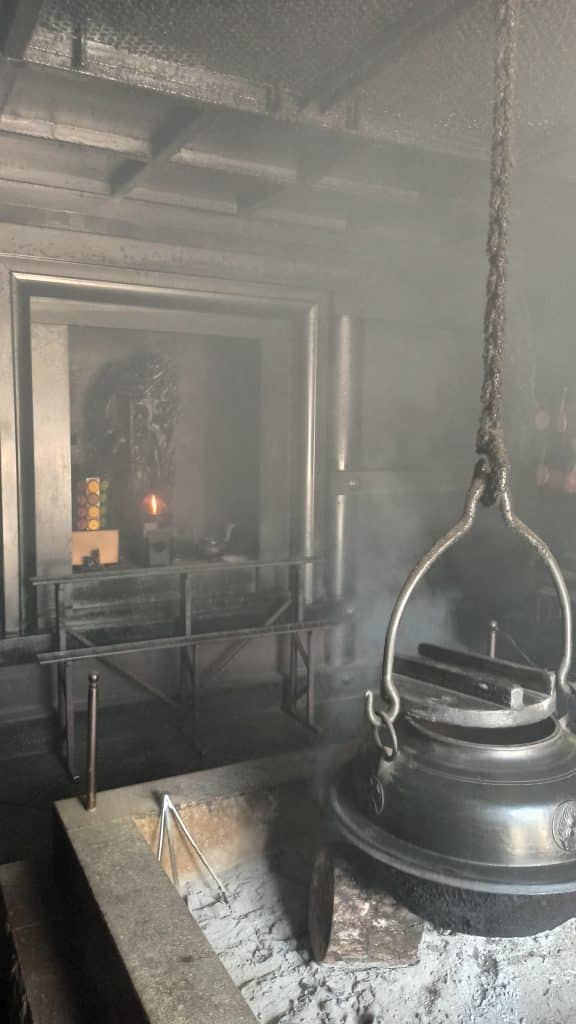


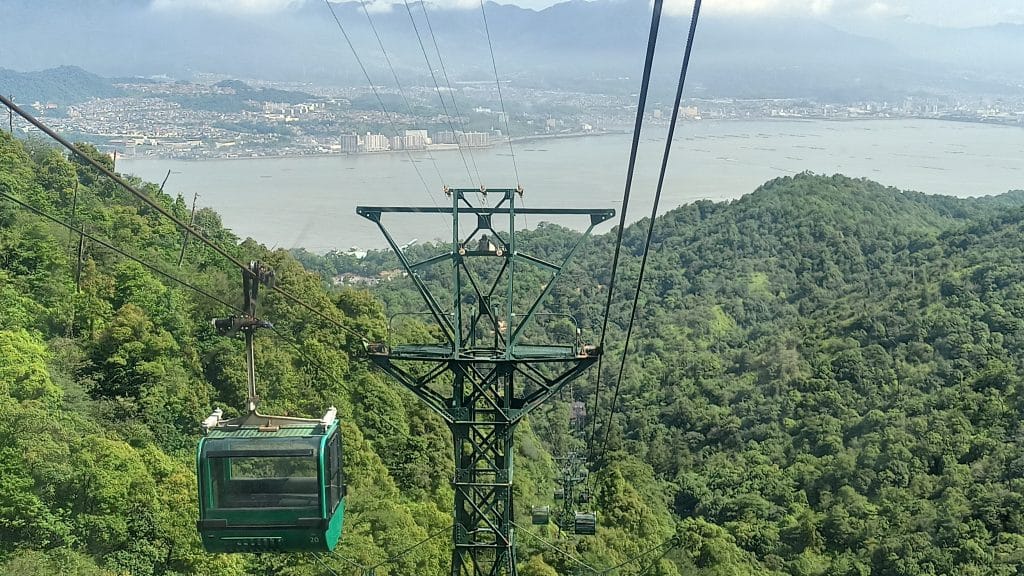
We had taken the cable car to near the top of Mt. Misen and then started walking. Its REALLY hot today so we feel no guilt using the mechanical ascent over the biological. We were absolutely dripping when we did reach the summit. At 535m it was worth it for some incredible 360 views.
A friendly tourist information chap told us there are only 1400 people living here, mostly old people as no youngsters want to live on the island. They would rather live on the mainland in a city. This might be because there is no supermarket, just tourist shops, and if you are pregnant, for the last 100 days till you give birth, you are not allowed on the Island. You must give birth on the mainland and come back with the baby. There is also no farming allowed here or burials, to keep the island pure. These are traditions passed down for over 1200 years, and the restrictions aren’t conducive to holding a young population.
From here we walked down the mountain, which was still hot work, but not so bad. Worse, for my achy knees, the steps seemed to go on forever. But it was a beautiful walk through the forrest, following a growing steam down a steep valley. It grew from a trickle to a torrential river by the time we reached the beautiful Daishoin temple.
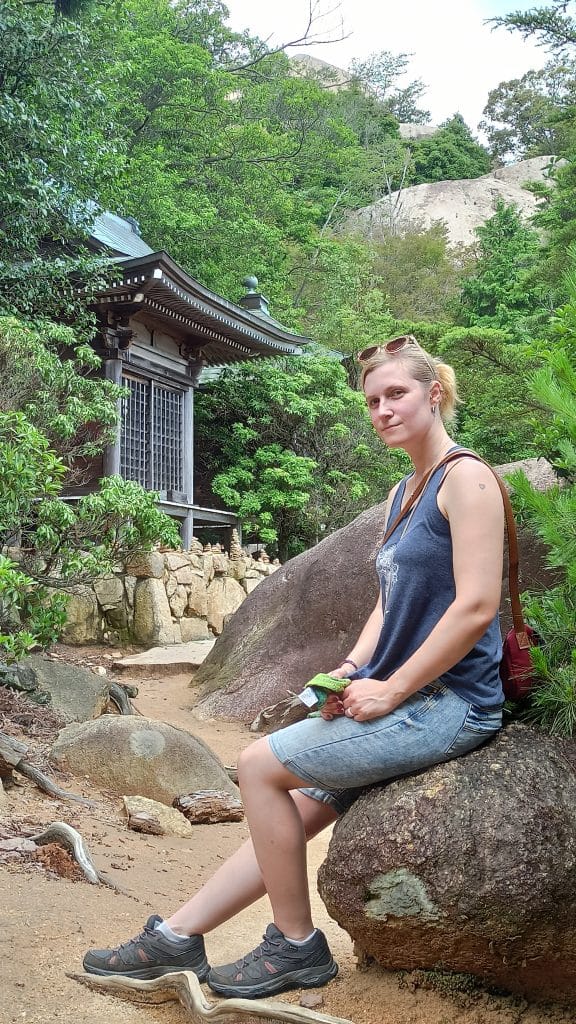
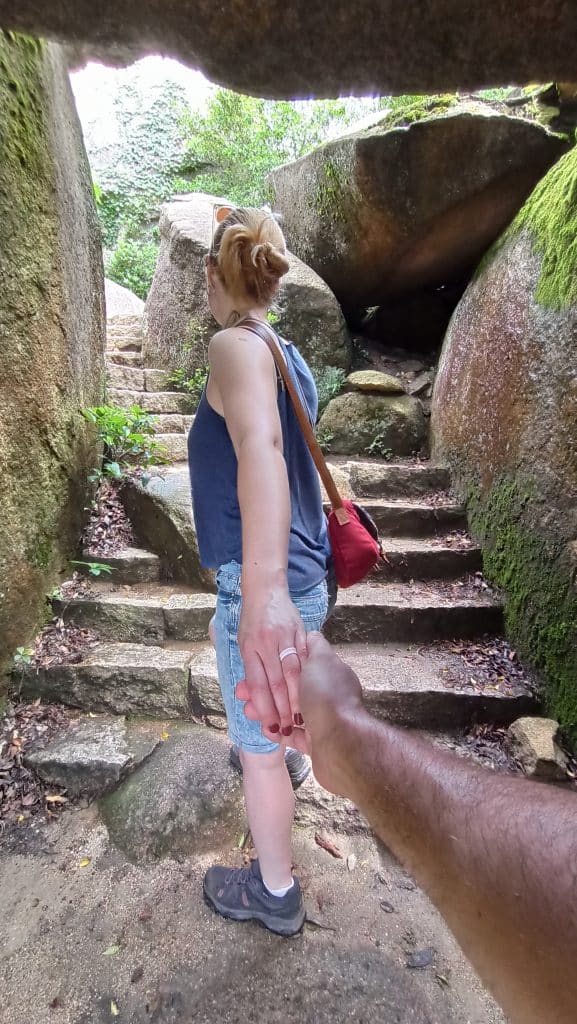



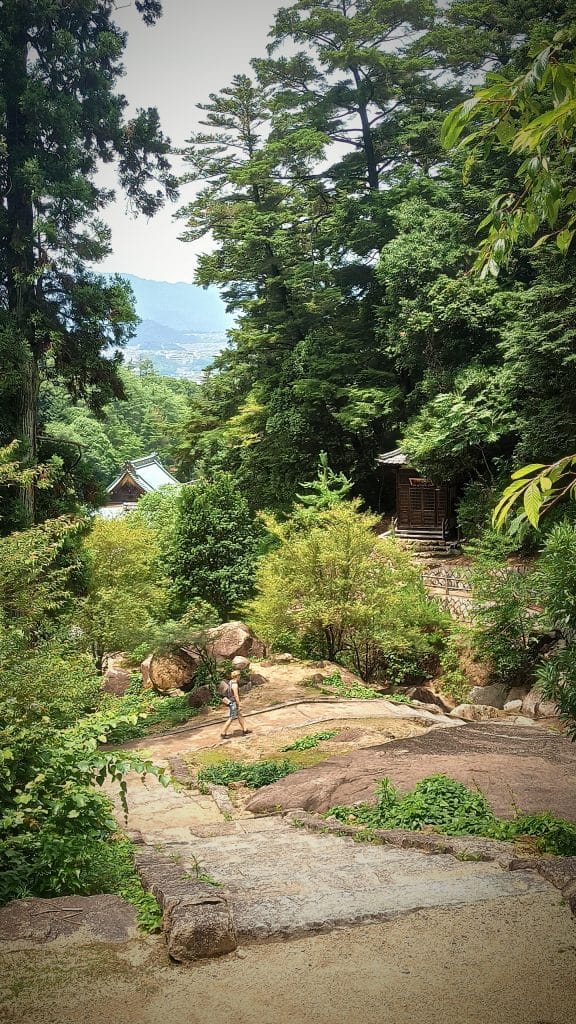
This temple is the most beautiful thing you have ever seen. It sits among wonderfully cared for trees and gardens, with streams running all thru and around, delivering water and calming sound to the whole place. The buildings are exquisitely built, nestled in the side of the hill and decorated in beautifully carved wood. Its so “Japanese” its like a movie set, except this place has gravity and authenticity. There are so many statues, donated over time that the grounds are covered in them, all cared for, but seated in well established succulent moss. It’s got that organic growth about the place that new buildings, plonked into a site never seem to have. This temple has evolved and grown over different layers with winding paths between them of different surfaces and ages. But it doesn’t look a mess, it’s wonderfully chaotically orderly. Each element has a fantastic design and they are joined by well thought out beautiful spaces, but it’s grown like a passion flower plant; vines and leaves everywhere with flowers dotted amongst them.
I went into one temple and just smelt the air while looking around. It had a hot and musty wood smell. Like the back of an old bookcase when you’ve just emptied it of books. I was blown away by the intricacy of the woodwork, and the size of the planks used for the floor. They must be half a metre wide and 20cm thick, grey, worn smooth by the passing feet and time.
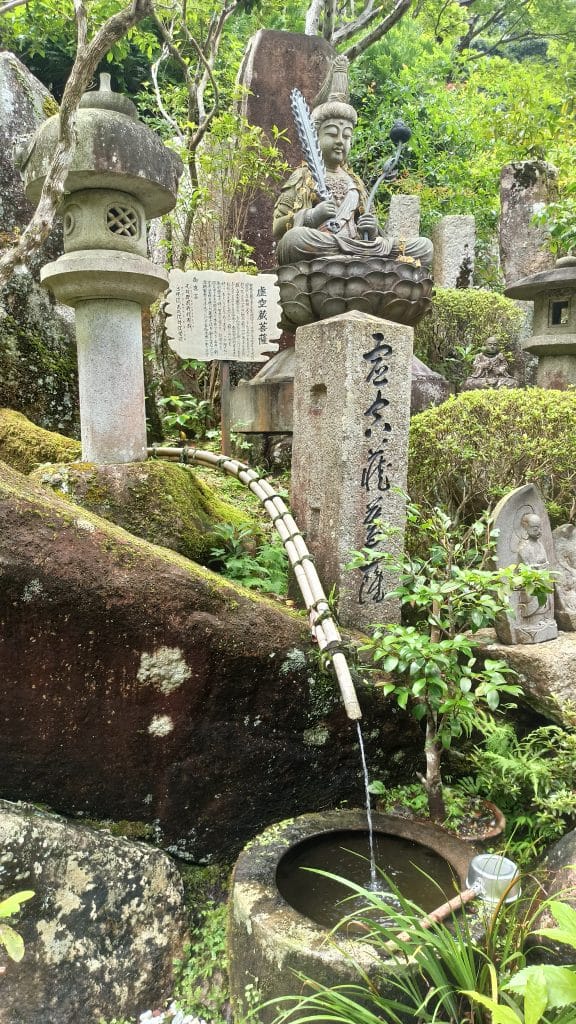


There was a winding path leading through a garden of little Budda’s. A sign at the start said there were over 500 in this garden. Someone had knitted each one a red hat so they all sat there with spiritually warm heads, smiling up at us, as we strolled by.

Not far up the hill was a chamber set into the hillside beneath another hall. We could hear soft music chiming with a slow chanting voice coming from the doorway. Inside were hundreds of tin lamps hanging from the ceiling in a grid from wall to wall. All of them were lit with a warm orange glow giving shadowless illumination over the rows and rows of Buddhas. They were sitting in lines with a scriptural character before each of them. Some had wooden wish tokens around their necks and others didn’t. It was hard to understand, and with no internet signal under here, we couldn’t translate any of the text, so it will remain a beautiful mystery.

Having depleted our water half way down the hill, and getting hungry, we returned to the shoreside shops. These surround the Itsukushima Jinja Shrine. Its a nice bright vermillion (orange) and white shrine sitting on the edge of the water of the inland sea of Japan. Looking out to sea from the decking of you can see The Great Torii Gate, described in 1643 by Hayashi Gahō as one of the Three Great Views of Japan. Its therefore very popular. The reason we were up so early, as usual, was to beat the crouds. This allowed us a very quiet walk around the shrine and to enjoy this view. Described as a floating torii gate, we were able to walk nearly all the way out to it, as the tide was out. It was nice, and we got the famous photos, but we enjoyed the mountain, the walk and the Daishoin temple more.
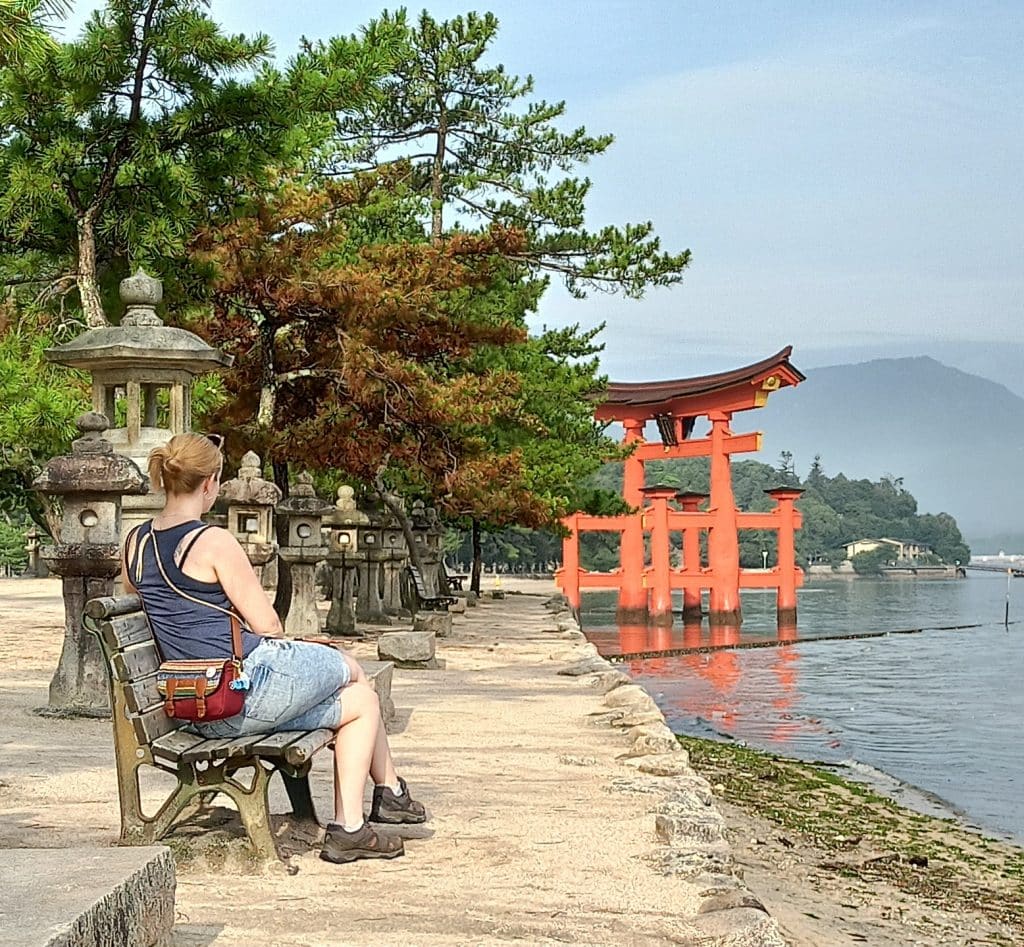

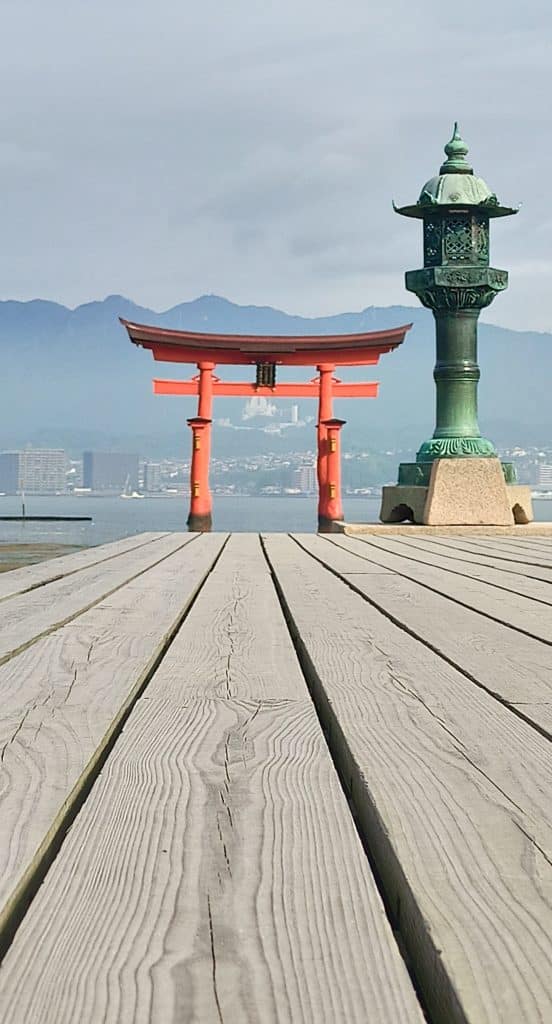


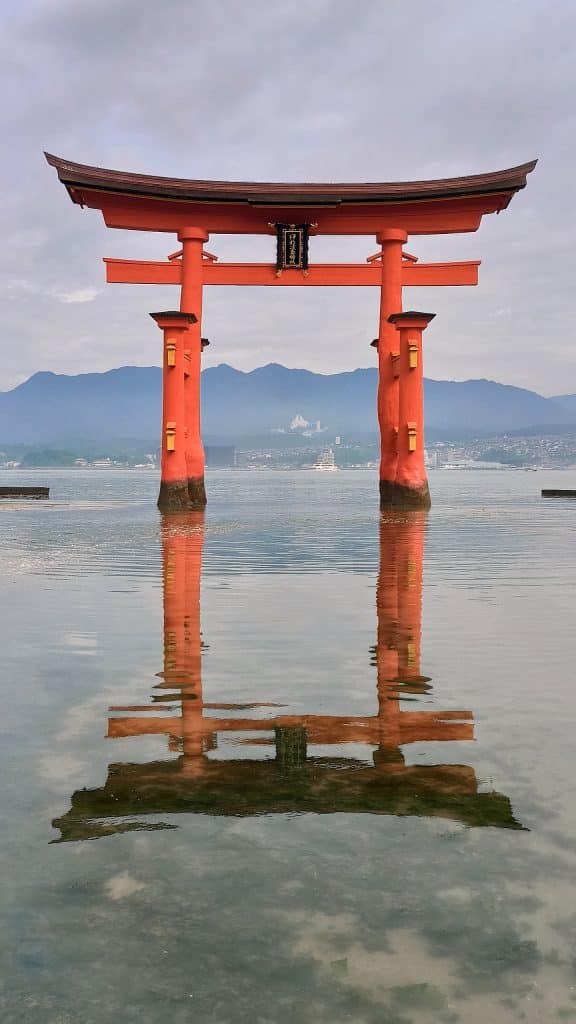
Part of the reason the temple is built out into the water on Camphor wood piles and decking is that the whole island is considered a god. At the end of the day we saw why. The profile of the mountains look like the face of the Budda. Even where a landslide near a waterfall looks like his eye is opening. It was also because this shrine is dedicated to the tutelary god of navigation and to serve as a base for the maritime activities of the Taira clan. It was built by Kiyomori who, at the height of his clans power was attempting to monopolize overseas trade along the Inland Sea of Japan.
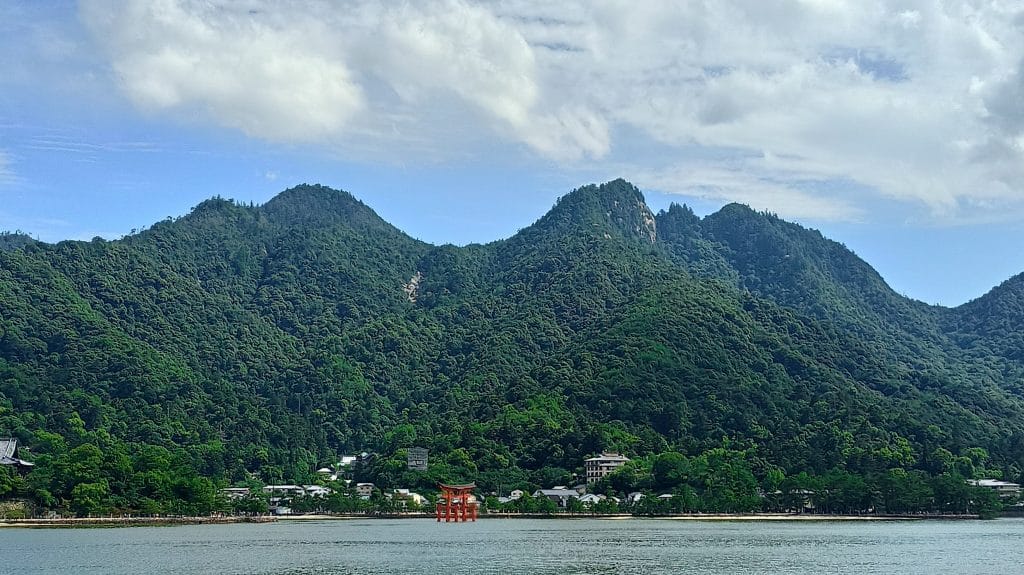
Just before we left I went on the hunt for one last geocache. I had already found one at the top of the mountain and on the other side of the Itsukushima shrine, but this one was a bit special. I’ve never seen one like it. It was in a phone booth, by the port, stuck up under a metal shelf. It used magnets, like many do, but it was not a canister or pot. It was a flat sheet magnet, like you put on your fridge. It was black on one side so it was nearly invisible, despite its size. We left a message and left the island, our final day out in Japan complete.



